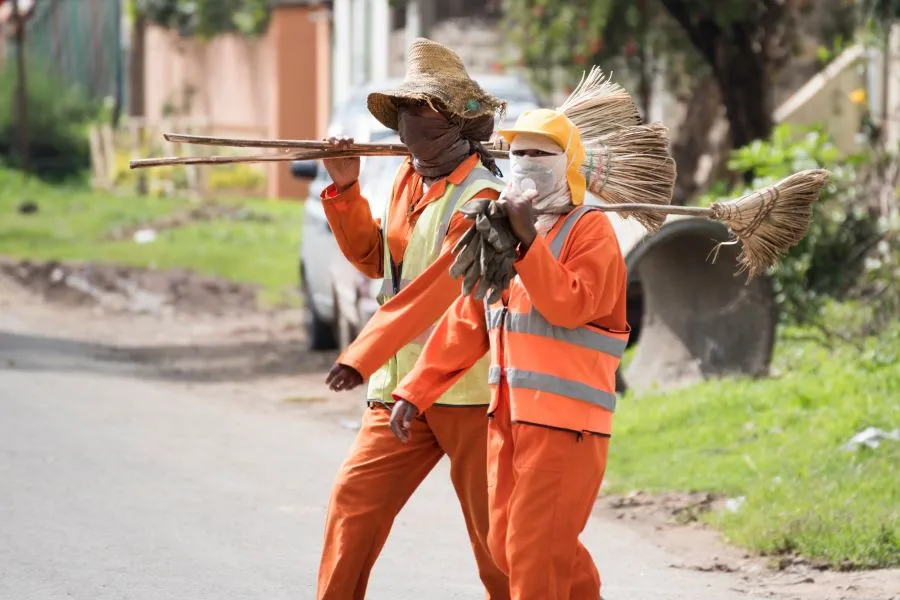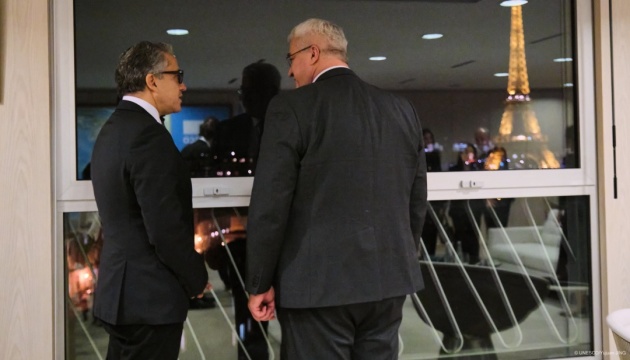Ethiopian incinerator misses output targets, report flags tech mismatch in African waste streams – packaginginsights.com

Report on the Reppie Waste-to-Energy Facility’s Misalignment with Sustainable Development Goals
Executive Summary
A report by the Global Alliance for Incinerator Alternatives (GAIA) indicates that the Reppie waste-to-energy facility in Addis Ababa, Ethiopia, has failed to achieve its stated economic, environmental, and social objectives. The facility’s underperformance highlights a significant misalignment with several key Sustainable Development Goals (SDGs), including those related to clean energy, sustainable cities, public health, and decent work. The core issue stems from the adoption of incineration technology unsuited to the high-moisture, organic composition of the local municipal solid waste stream.
Failure to Meet Energy and Infrastructure Goals
The facility’s operational failures directly contravene goals for sustainable infrastructure and energy.
- SDG 7 (Affordable and Clean Energy): The plant was projected to generate 185.6 GWh of electricity per year but produces approximately 92.8 GWh, less than half its target. This shortfall undermines its contribution to clean energy objectives.
- SDG 9 (Industry, Innovation, and Infrastructure): The project represents a failure in developing sustainable and resilient infrastructure. The technological mismatch between the European-designed incinerator and local waste realities has led to chronic operational failures and inefficiency.
- SDG 11 (Sustainable Cities and Communities): Intended to process 1,400 tons of waste daily and divert it from the Koshe landfill, the facility only manages between 396 and 650 tons. Consequently, approximately 3,000 tons of waste continue to be sent to the landfill daily, impeding progress toward sustainable urban waste management.
Environmental and Public Health Concerns
The facility’s environmental and health impacts present a direct challenge to critical SDGs.
- SDG 3 (Good Health and Well-being): The plant produces 85 metric tons of toxic ash daily with no clear, public plan for its safe disposal. Furthermore, nearby communities have reported respiratory issues, skin irritation, and unpleasant odors, indicating a failure in regulatory oversight and a direct threat to public health.
- SDG 6 (Clean Water and Sanitation): The absence of a secure toxic ash management strategy poses a significant risk of contaminating local soil and water sources, jeopardizing water safety.
- SDG 13 (Climate Action): The report suggests that climate finance should be shifted away from costly and inefficient incineration projects toward more effective circular economy approaches that offer greater climate benefits.
Adverse Socio-Economic Impacts
The project has had severe negative consequences for vulnerable populations, undermining goals for poverty reduction and decent work.
- SDG 1 (No Poverty) & SDG 10 (Reduced Inequalities): The facility has exacerbated poverty and inequality by disrupting the livelihoods of informal waste pickers, who are crucial to the city’s recycling efforts. These workers have reported a 50% drop in income due to competition for recyclable materials.
- SDG 8 (Decent Work and Economic Growth): The promise of creating 8,000 jobs for local communities did not materialize. Instead, the facility displaced workers in the informal sector without providing alternative employment or integrating them into a formal system, thus failing to promote inclusive and sustainable economic growth.
Recommendations for Aligning with Sustainable Development Goals
The report outlines a strategy for developing waste management systems that align with the SDGs.
- Prioritize Zero-Waste Systems: Invest in decentralized solutions such as composting and recycling hubs, which are better suited to the local waste composition and directly support SDG 11 and SDG 12 (Responsible Consumption and Production).
- Integrate the Informal Sector: Develop policies to formalize and protect the livelihoods of waste pickers, recognizing their contribution to the circular economy and advancing SDG 1, SDG 8, and SDG 10.
- Strengthen Environmental Governance: Implement transparent, independent monitoring of emissions and waste disposal to protect public health and the environment, in line with SDG 3 and SDG 16 (Peace, Justice and Strong Institutions).
- Redirect Climate Finance: Shift investments from capital-intensive incineration projects to sustainable, high-impact circular approaches that promote resource efficiency and create green jobs, aligning with SDG 13 and SDG 8.
Analysis of the Article in Relation to Sustainable Development Goals
-
Which SDGs are addressed or connected to the issues highlighted in the article?
The article highlights issues that are directly connected to several Sustainable Development Goals (SDGs). The core themes of waste management, energy production, environmental pollution, public health, and socio-economic impacts on vulnerable populations link the Reppie facility’s failures to the following SDGs:
- SDG 3: Good Health and Well-being: The article discusses the negative health impacts on communities near the facility.
- SDG 7: Affordable and Clean Energy: The facility was designed as a waste-to-energy plant, directly relating to the goal of increasing clean energy production.
- SDG 8: Decent Work and Economic Growth: The article details the project’s impact on the livelihoods of informal waste pickers and its failure to create promised jobs.
- SDG 11: Sustainable Cities and Communities: The entire context is about municipal solid waste management in an urban center, Addis Ababa.
- SDG 12: Responsible Consumption and Production: The article critiques the incineration model and advocates for sustainable waste management practices like recycling and composting.
-
What specific targets under those SDGs can be identified based on the article’s content?
Based on the specific problems and solutions discussed in the article, the following SDG targets can be identified:
SDG 3: Good Health and Well-being
- Target 3.9: By 2030, substantially reduce the number of deaths and illnesses from hazardous chemicals and air, water and soil pollution and contamination. This is relevant due to the “85 metric tons of toxic ash daily” and reports from nearby communities of “respiratory issues, skin irritation, and unpleasant odours.”
SDG 7: Affordable and Clean Energy
- Target 7.2: By 2030, increase substantially the share of renewable energy in the global energy mix. The Reppie facility was intended to contribute to this target by converting waste to energy, but its failure to meet its projected output (“92.8 GWh per year” instead of “185.6 GWh per year”) shows a shortfall in achieving this goal.
SDG 8: Decent Work and Economic Growth
- Target 8.5: By 2030, achieve full and productive employment and decent work for all. The article highlights the failure to meet this target, as the facility did not create the promised “8,000 new jobs” and negatively impacted existing livelihoods, causing a “50% drop in income” for informal waste pickers.
SDG 11: Sustainable Cities and Communities
- Target 11.6: By 2030, reduce the adverse per capita environmental impact of cities, including by paying special attention to air quality and municipal and other waste management. The facility’s underperformance, leading to “3,000 tons of waste still go[ing] to the Koshe landfill” daily and producing toxic emissions, directly contradicts the aim of this target.
SDG 12: Responsible Consumption and Production
- Target 12.5: By 2030, substantially reduce waste generation through prevention, reduction, recycling and reuse. The article criticizes the incineration model for competing with recycling efforts and advocates for “zero-waste, decentralized solutions, such as composting or recycling hubs,” which directly align with this target.
-
Are there any indicators mentioned or implied in the article that can be used to measure progress towards the identified targets?
Yes, the article provides several quantitative and qualitative indicators that can be used to measure progress or failure regarding the identified targets:
Indicators for SDG 3 (Target 3.9)
- Volume of toxic waste produced: The facility produces “85 metric tons of toxic ash daily.”
- Incidence of pollution-related health issues: Reports from communities of “respiratory issues, skin irritation, and unpleasant odours.”
- Levels of pollutants: The call for a “biomonitoring exercise to assess levels of heavy metals and organic pollutants” implies that these are key indicators of environmental and health safety.
Indicators for SDG 7 (Target 7.2)
- Amount of renewable energy generated: The facility’s actual output of “92.8 GWh per year” versus its projected output of “185.6 GWh per year.”
Indicators for SDG 8 (Target 8.5)
- Job creation figures: The failure to create the promised “8,000 new jobs.”
- Income levels of vulnerable workers: The “50% drop in income” experienced by informal waste pickers.
Indicators for SDG 11 (Target 11.6)
- Waste processing capacity: The plant processes “396 to 650 tons of waste per day,” which is less than half its expected capacity of “1,400 tons.”
- Amount of waste diverted from landfills: The fact that “3,000 tons of waste still go to the Koshe landfill” indicates a failure in waste diversion.
Indicators for SDG 12 (Target 12.5)
- Availability of recyclable materials: The article implies a reduction in recycling, stating that “recyclables became harder to find” for waste pickers.
-
Create a table with three columns titled ‘SDGs, Targets and Indicators” to present the findings from analyzing the article.
SDGs Targets Indicators SDG 3: Good Health and Well-being 3.9: Reduce illnesses from hazardous chemicals and pollution. - Volume of toxic ash produced daily (85 metric tons).
- Community reports of respiratory issues and skin irritation.
- Levels of heavy metals and organic pollutants in the area.
SDG 7: Affordable and Clean Energy 7.2: Increase the share of renewable energy. - Annual electricity output (92.8 GWh) compared to projected output (185.6 GWh).
SDG 8: Decent Work and Economic Growth 8.5: Achieve full and productive employment and decent work for all. - Number of new jobs created (failure to create 8,000 jobs).
- Percentage change in income for informal sector workers (50% drop for waste pickers).
SDG 11: Sustainable Cities and Communities 11.6: Reduce the adverse environmental impact of cities, especially in waste management. - Daily waste processing volume (396-650 tons vs. 1,400 tons capacity).
- Tons of waste sent to landfill daily (3,000 tons).
SDG 12: Responsible Consumption and Production 12.5: Substantially reduce waste generation through recycling and reuse. - Availability of recyclable materials for the informal sector.
- Competition between incineration and recycling for materials.
Source: packaginginsights.com
What is Your Reaction?
 Like
0
Like
0
 Dislike
0
Dislike
0
 Love
0
Love
0
 Funny
0
Funny
0
 Angry
0
Angry
0
 Sad
0
Sad
0
 Wow
0
Wow
0




















































.jpg.webp?itok=0ZsAnae9#)

























